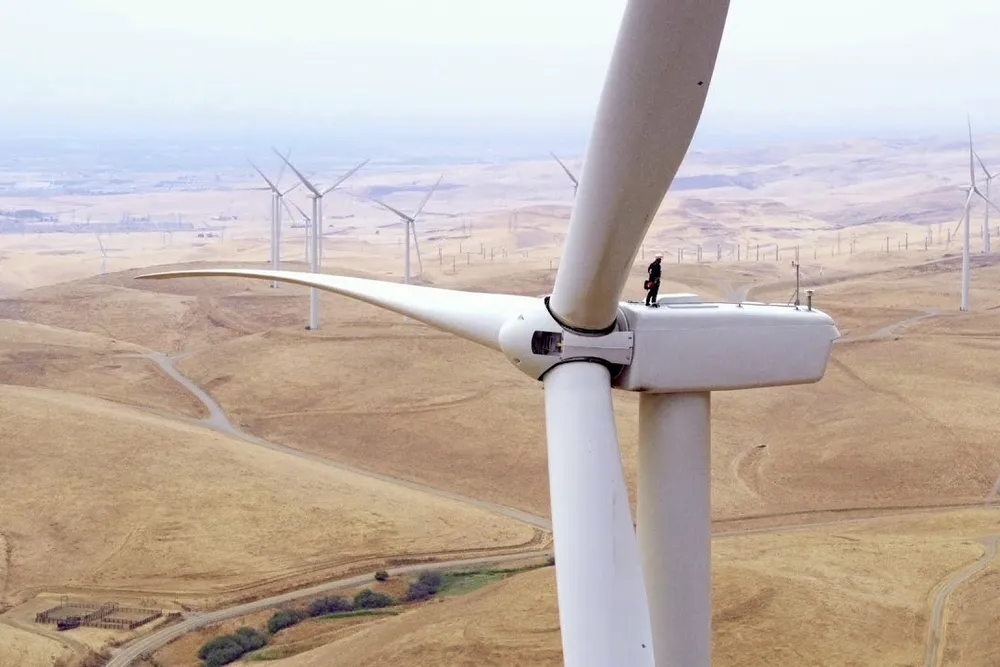NIMBYs, the grid and now Trump: US wind power's problems pile up
Energy data firm Cleanview highlights that wind installations fell 23% as the sector struggles with rising local opposition and interconnection issues

The US added 5.1GW of utility-scale wind capacity in 2024, a 23% decline from 2023, marking the fourth consecutive year of lower activity as the sector grapples with multiple challenges, according to a report by energy data firm Cleanview.
Except for the 132MW South Fork project off the coast of Rhode Island, all new capacity was onshore. South Fork is the first completed commercial US offshore wind farm.
Texas was the only state to build more than 1GW of capacity (2.14GW), 42% of national additions, followed by Wyoming (589MW), Oklahoma (503MW), Arizona (379MW), and Montana (308MW).
There were also no new projects in much of the Great Plains, a large blustery swath of the nation’s interior east of the Rocky Mountains that has helped drive sector growth over the last 25 years.
The report found that developers are still building relatively large wind projects with the top four in Texas. They were Enel Green Energy’s 350MW Azure Sky, NextEra Energy Resources’ 309MW Canyon Wind and 256MW Roadrunner, and Omega Energia’s 266MW Goodnight.
Only four developers built more than one project: NextEra Energy Resources (six), and two each by AES Clean Energy, Enel, and TransAlta.
Sector consolidation
This trend has become more pronounced in recent years as the sector consolidates around 10 or so large, deep-pocketed independent power producers, most foreign owned, and US electric utility groups Berkshire Hathaway Energy and Xcel Energy.
Onshore development hurdles include growing opposition from communities with about 400 local ordinances across the country restricting renewable energy projects, many of them targeting wind.
“Wind has a NIMBY problem,” notes the report, referring to the acronym for the phrase “not in my back yard.” Leading states for the number of ordinances are Michigan and New York, followed by Indiana, Iowa, Kansas, Maine, Nebraska, Ohio, Texas, Virginia, and Wisconsin.
Most onshore development takes place on private land, limiting what pro-wind states can do to overcome resistance among property owners and local officials.
Wind also has a tough interconnection problem given the US is investing less in high-voltage transmission and building fewer miles of lines, a steady decline over the last decade, according to the report.
Much of the best undeveloped wind resource is ln areas that require either new long-haul high-voltage lines to get energy to market or expensive connections to increasingly congested lines in service.
The time-intensive process (3-6 years) plagued with uncertainty to move a project through regional interconnection queues raises costs, helping make onshore wind less competitive in parts of the country with natural gas and solar.
'Trump problem'
The administration is giving the issue priority, as did the previous one, but permitting reform remains uncertain at federal and state levels, while efforts by regional grid operators to streamline interconnection queues stuffed with at least 1.5TW of clean energy projects have been uneven at best.
“Now wind has a Trump problem,” notes the report, referring to President Donald Trump’s early executive order halting federal approvals for wind projects on US-owned land, while banning offshore wind leasing and pausing it for onshore. It also places existing offshore leases under review for potential termination or amendment.
Amid these challenges, developers aim to bring 9.2GW of projects online in 2025 with 6.1GW of capacity in construction or complete, and awaiting commercial operation, according to the report.
The 9.2GW includes 1.51GW in offshore capacity from Avangrid Renewables’ Vineyard Wind I and Orsted’s Revolution Wind arrays. Both projects have experienced delays with Orsted last August announcing Revolution’s full commissioning had been pushed back to 2026.
Texas will again lead onshore activity this year with roughly 2.65GW of capacity, followed by Wyoming, Illinois, and Minnesota.
Cleanview uses a proprietary renewable energy tracking platform to create the report which combines public data and its own research.
(Copyright)